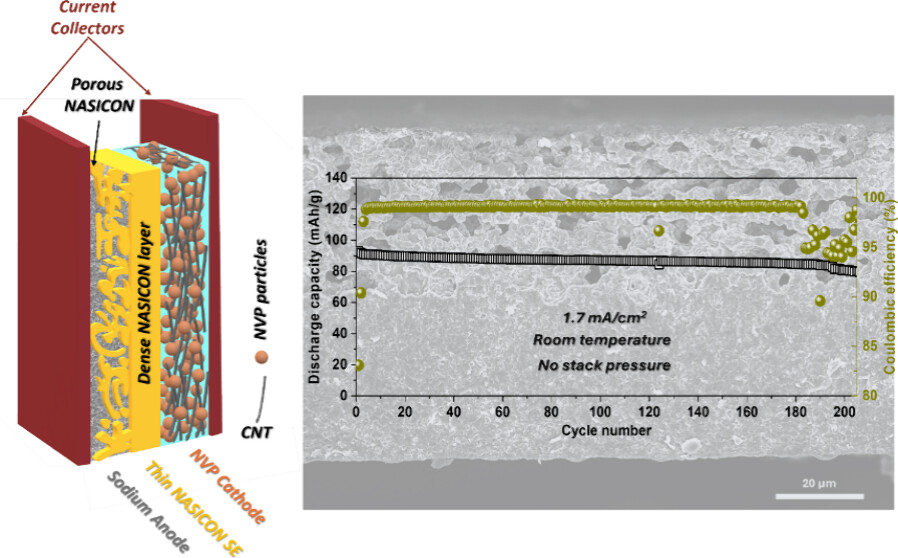New Solid-State Sodium Battery Offers Energy Density Comparable to Li-Ion
A recent study by the Wachsman group at the University of Maryland (UMD) A. James Clark School of Engineering published in ACS Energy Letters improves the capabilities of sodium solid-state batteries (SSBs) with a thin NASICON (Natrium Superionic Conductor) bilayer architecture. With the rapidly increasing global demand for commercially sustainable energy storage solutions, sodium-based batteries have emerged as an affordable and practical alternative. Their appeal lies in sodium’s natural abundance in the Earth’s crust, its low redox potential, and its high theoretical capacity. Replacing conventional, flammable liquid electrolytes with solid-state counterparts also promises enhanced energy densities and improved safety. While sodium solid electrolytes have achieved high ionic conductivities on par with liquid electrolytes and broad electrochemical stability windows, sodium SSBs have until now not achieved the energy density needed to compete with conventional Li-ion batteries. NASICON-based solid electrolytes stand out for their superior chemical, mechanical, and thermal stability. This new study presents the fabrication of flat, thin (as low as 18 μm), and dense Zn,Mg dual-doped NASICON electrolyte separator layers in a 3D porous–dense bilayer structure. Full cells incorporating vanadium phosphate cathodes with a high areal capacity of 1.8 mAh/cm² and sodium-filled porous NASICON anodes were successfully cycled at record-high current densities of 10.8 mA/cm² (6 C) at room temperature (22 °C), along with sustained long-term cycling at 1.7 mA/cm² (1 C). Previous work overcame the interfacial impedance limitation of sodium metal with NASICON in a 3D porous–dense–porous trilayer architecture. The high surface area and interconnected porosity at the interface substantially lowered the interfacial resistance—by several orders of magnitude compared to conventional planar anode geometries—effectively distributing local current densities and mitigating volume changes during cycling. This electrolyte architecture promises high energy density room-temperature sodium SSBs without the need for stack pressure further improving commercial viability at the pack level. “In this newer work the focus was demonstrating full cells with energy density comparable to Li-ion (up to 286 Wh/g) and ability to charge and discharge at high rates even at low temperature. This breakthrough enables solid-state sodium to not only be a candidate for grid-scale storage, but also to compete with Li-ion for EV applications” said Wachsman. For the full article, click here.
Related Articles: May 6, 2025 Prev Next |


